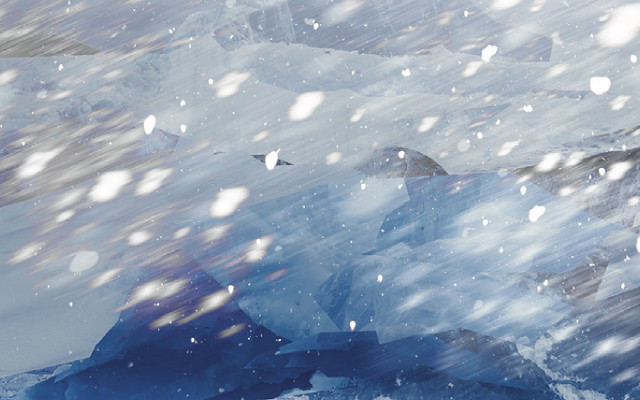A blizzard is a severe snowstorm characterized by strong sustained winds of at least 35 mph (56 km/h) and lasting for a prolonged period of time—typically three hours or more. A ground blizzard is a weather condition where snow is not falling but loose snow on the ground is lifted and blown by strong winds. Blizzards can have an immense size, which can usually be larger than a few states in the United States.
In the United States, the National Weather Service defines a blizzard as a severe snow storm characterized by strong winds causing blowing snow that results in low visibilities. The difference between a blizzard and a snowstorm is the strength of the wind, not the amount of snow. To be a blizzard, a snow storm must have sustained winds or frequent gusts that are greater than or equal to 56 km/h (35 mph) with blowing or drifting snow which reduces visibility to 400 m or 0.25 mi or less and must last for a prolonged period of time—typically three hours or more.[1][2]
While severe cold and large amounts of drifting snow may accompany blizzards, they are not required. Blizzards can bring whiteout conditions, and can paralyze regions for days at a time, particularly where snowfall is unusual or rare.
A severe blizzard has winds over 72 km/h (45 mph), near zero visibility, and temperatures of −12 °C (10 °F) or lower.[3] In Antarctica, blizzards are associated with winds spilling over the edge of the ice plateau at an average velocity of 160 km/h (99 mph).[3]
Ground blizzard refers to a weather condition where loose snow or ice on the ground is lifted and blown by strong winds. The primary difference between a ground blizzard as opposed to a regular blizzard is that in a ground blizzard no precipitation is produced at the time, but rather all the precipitation is already present in the form of snow or ice at the surface.
The Australia Bureau of Meteorology describes a blizzard as, “Violent and very cold wind which is laden with snow, some part, at least, of which has been raised from snow covered ground.” [4]
The Oxford English Dictionary concludes the term blizzard is likely onomatopoeic, derived from the same sense as blow, blast, blister, and bluster; the first recorded use of it for weather dates to 1829, when it was defined as a “violent blow”. It achieved its modern definition by 1859, when it was in use in the western United States. The term became common in the press during the harsh winter of 1880–81.[5]
(From Wikipedia, June 2018)


